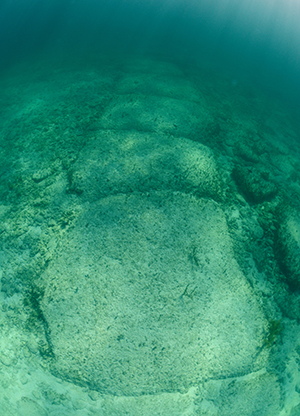
According to Edgar Cayce, Atlantis—located from the Gulf of Mexico to Gibraltar—was destroyed in a final catastrophic event circa 10,000 B.C. The focus of A.R.E. efforts has been in the Bimini area, however, other related locations have also been investigated. Research on the so-called Bimini Road has been hampered as researchers are split on the origin of the structure: some believe it is a manmade road or foundation while others assert it is natural beach rock, which fractured in place. However, a seldom-discussed fact is that a portion of the Bimini Road was removed after a hurricane in 1926.
Before the end of the last Ice Age (12,000-years ago) the ocean levels were at least 300 feet below their current levels. A vast “island” was in the area in those remote times rather than chains of islands. Edgar Cayce referred to Bimini as one of the mountaintops of ancient Atlantis. While few would consider the island a mountain, 12,000-years ago it was one of the highest points on the vast land formation in the region. Bimini and Andros Island, lying about 100 miles to the east of Bimini, were a part of the same island in 10,000 B.C.—called “Poseidia” temple which sunk in 10,000 B.C. and is, according to Cayce, covered by “the slime of ages.” This record hall is identical to the one in Egypt under the Sphinx.
Source: Edgar Cayce A.R.E.
